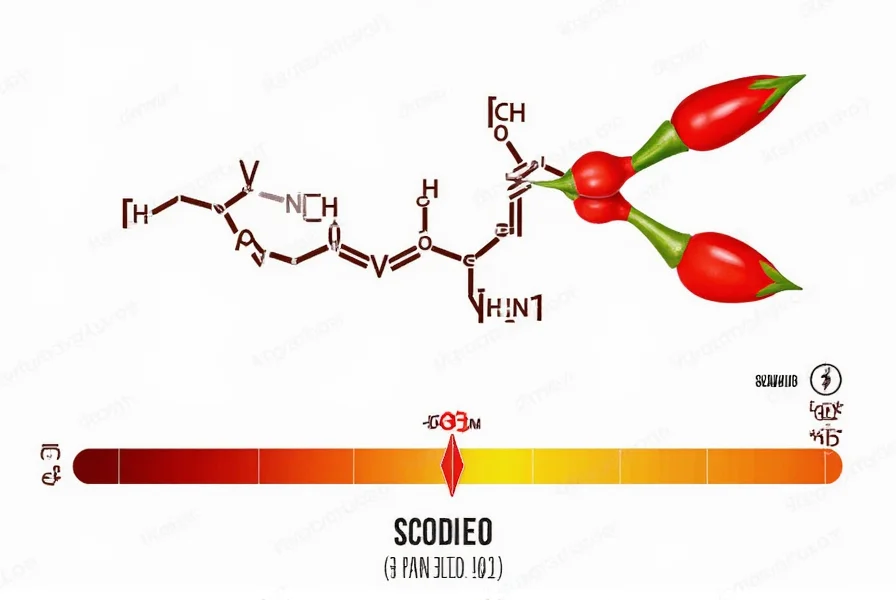Understanding pepper heat levels transforms cooking experiences and prevents culinary disasters. The Scoville scale remains the global standard for measuring spiciness, though modern high-performance liquid chromatography (HPLC) has replaced Scoville's original subjective taste test with precise chemical analysis. This evolution ensures consistent, objective measurements across the industry.
How the Scoville Scale Works
Wilbur Scoville's 1912 method involved diluting chili extract in sugar water until tasters could no longer detect heat. The dilution factor determined the Scoville rating—a 5,000 SHU pepper required 5,000-fold dilution. While innovative for its time, this approach suffered from human taste variation.
Today's HPLC method objectively measures capsaicinoids—the chemical compounds causing heat. Laboratories convert these measurements to Scoville units using a standardized formula, maintaining continuity with historical data while eliminating subjectivity. This scientific approach provides reliable pepper heat scale comparison for consumers and producers alike.

Pepper Heat Scale Reference Chart
| Pepper Variety | Scoville Heat Units (SHU) | Heat Level Description |
|---|---|---|
| Bell Pepper | 0 SHU | No heat |
| Pepperoncini | 100-500 SHU | Mild |
| Jalapeño | 2,500-8,000 SHU | Moderate |
| Serrano | 10,000-23,000 SHU | Hot |
| Habanero | 100,000-350,000 SHU | Very hot |
| Ghost Pepper (Bhut Jolokia) | 800,000-1,041,427 SHU | Extremely hot |
| Carolina Reaper | 1,400,000-2,200,000 SHU | Dangerously hot |
Practical Implications of Pepper Heat Levels
Understanding scoville heat units chart values helps home cooks and professional chefs make informed decisions. A mild poblano (1,000-2,000 SHU) works well in stuffed pepper recipes where heat shouldn't dominate, while a cayenne pepper (30,000-50,000 SHU) provides noticeable kick in sauces. The habanero pepper heat level (100,000-350,000 SHU) delivers intense fruity heat ideal for Caribbean jerk seasoning but requires careful handling.
Heat perception varies significantly among individuals due to genetic differences in TRPV1 receptors. What registers as moderately hot to one person might feel overwhelming to another. Always start with smaller quantities when experimenting with high-Scoville peppers, gradually increasing to achieve desired heat levels without compromising flavor balance.
Factors Influencing Pepper Heat
Several variables affect where a specific pepper falls on the pepper spiciness measurement scale:
- Growing conditions: Stressors like inconsistent watering or temperature fluctuations increase capsaicin production
- Ripeness: Fully mature red jalapeños typically register higher on the scoville scale than green ones
- Plant genetics: Different varieties within the same species show significant heat variation
- Part of the pepper: The placenta (white ribs) contains the highest capsaicin concentration
These factors explain why two jalapeños from the same plant might register different scoville heat units. Commercial growers carefully control these variables to maintain consistent pepper heat scale ratings for product lines.
Safe Handling Practices for Hot Peppers
Working with high-Scoville peppers requires precautions. Capsaicin transfers easily to skin and eyes, causing significant discomfort. Always wear food-safe gloves when handling extremely hot varieties like ghost peppers or Carolina Reapers. Avoid touching your face during preparation, and wash hands thoroughly with soapy water afterward—alcohol-based cleaners can spread capsaicin rather than remove it.
If capsaicin contacts skin, apply milk or yogurt to neutralize the burning sensation. For eye exposure, flush immediately with cool water for several minutes. Understanding these safety measures makes exploring the full pepper hot scale both enjoyable and secure.
Using the Scale in Cooking and Recipe Development
The scoville scale serves as an invaluable tool for recipe development. When substituting peppers, consult a comprehensive pepper heat scale comparison chart to maintain intended heat levels. For example, replacing a serrano (10,000-23,000 SHU) with a habanero (100,000-350,000 SHU) without adjustment would create an overwhelmingly spicy dish.
Chefs often remove seeds and membranes to reduce heat while preserving flavor. This technique works particularly well with moderately hot peppers like jalapeños. For extremely hot varieties, even minimal contact with these parts significantly impacts the final dish's scoville heat units.
FAQ
What is the hottest pepper on the Scoville scale?
The Carolina Reaper currently holds the Guinness World Record as the hottest pepper, measuring 1.4-2.2 million Scoville Heat Units. It was officially recognized in 2013 and remains the benchmark for extreme heat, though newer experimental varieties like Pepper X claim even higher ratings.
How can I reduce the heat of a dish that's too spicy?
Add dairy products like yogurt or sour cream, which contain casein that binds to capsaicin. Acidic ingredients such as lemon juice or vinegar can also help neutralize heat. Starchy foods like rice or bread absorb capsaicin, while sugar provides counterbalancing sweetness. Never use water, as it spreads capsaicin rather than dissolving it.
Why do some jalapeños taste hotter than others?
Jalapeño heat varies due to growing conditions, ripeness, and genetics. Stressors like inconsistent watering increase capsaicin production. Red jalapeños (fully ripe) typically register higher on the scoville scale than green ones. Even within the same plant, individual peppers can range from 2,500-8,000 SHU based on these factors.
Does cooking affect pepper heat levels?
Cooking can slightly reduce heat through capsaicin breakdown, but the effect is minimal. Roasting may concentrate flavors while preserving heat. Freezing actually increases perceived heat by breaking down cell walls and releasing more capsaicin. The fundamental scoville heat units remain relatively stable through most cooking processes.











 浙公网安备
33010002000092号
浙公网安备
33010002000092号 浙B2-20120091-4
浙B2-20120091-4